Lean the Japanese new year traditions. Embark on a cultural odyssey through Japan’s cherished New Year traditions, where ancient customs and modern celebrations intertwine, creating a tapestry of renewal, hope, and good fortune.
Ring out the old, ring in the new! Dive into the rich tapestry of Japanese New Year traditions. From joyous temple visits to delicious feasts, this guide unveils how Japan welcomes prosperity, health, and happiness for the year ahead.
Page Contents
What Are Some Japanese New Year Traditions?
Japanese New Year traditions are rich and symbolic. They include “Joya no Kane,” the ringing of temple bells 108 times to purify the soul, “Hatsumode,” visiting shrines or temples to pray for good fortune, and enjoying traditional foods like “osechi ryori” and “ozoni,” each with unique meanings. “Otoshidama” is the tradition of giving money to children to teach financial responsibility.
Decorations like “kadomatsu” and “shimekazari” symbolize prosperity and purity. On New Year’s Eve, people stay up late during “toshikoshi” and greet the first sunrise, “hatsu-hinode.”

Greetings like “Akemashite Omedetou” and “Nengajou” cards foster connections. These traditions highlight the significance of family, spirituality, and renewal.
- Related: Japanese New Year’s Family Traditions
- Related: Guide to Japan’s Nengajo New Years Cards
- Related: How Japanese Celebrate Christmas
Joya no Kane: The Tolling of Temple Bells
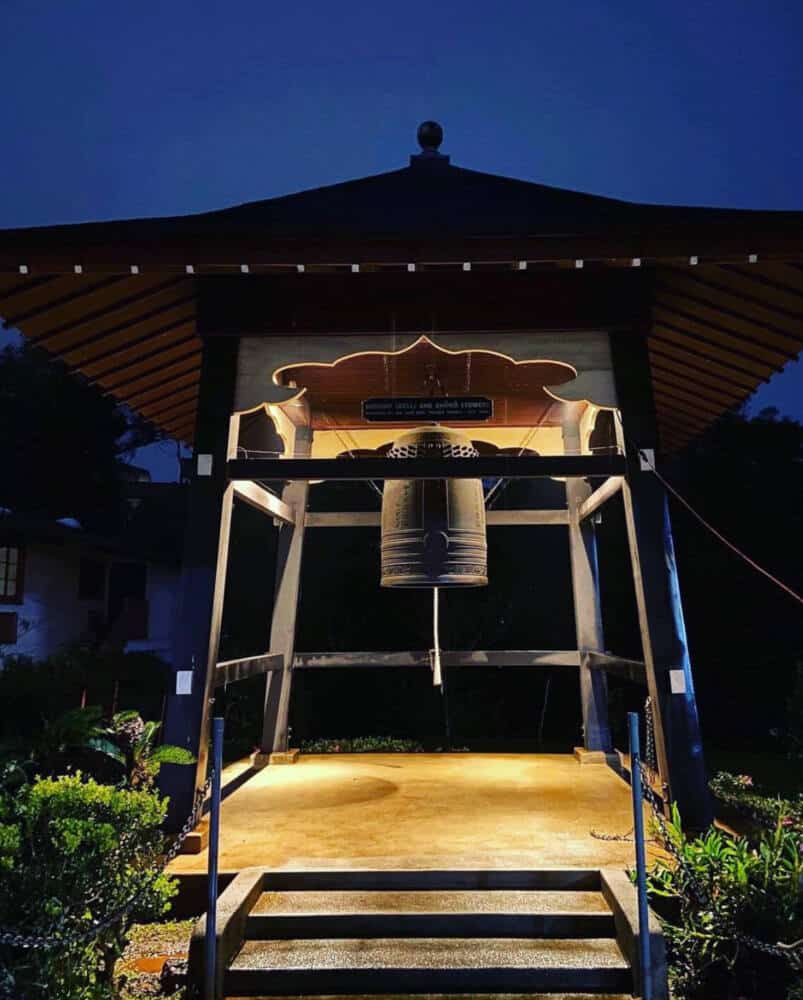
One of the most enchanting aspects of Japanese New Year traditions is “Joya no Kane.” It’s a tradition where temple bells ring 108 times to cleanse people of the 108 worldly desires.
Each toll is meant to purify the mind and soul. So, come New Year’s Eve, you’ll find people flocking to local temples to partake in this magical ceremony.
My personal favorite is the deep, resonant sound of the temple bells. The atmosphere is incredibly peaceful, and the moment the 108th ring fades away, there’s a sense of renewal in the air. It’s a spiritual experience that’s hard to describe.
The tolling of these bells is a reminder of the impermanence of life, and it encourages self-reflection, helping us let go of our attachments from the past year and start fresh.
- Related: All you need to know about Japanese culture day!
Hatsumode: First Shrine or Temple Visit
On New Year’s Day, it’s a custom to visit a shrine or temple for “Hatsumode.” It’s a way to pray for good fortune and make wishes for the year ahead.
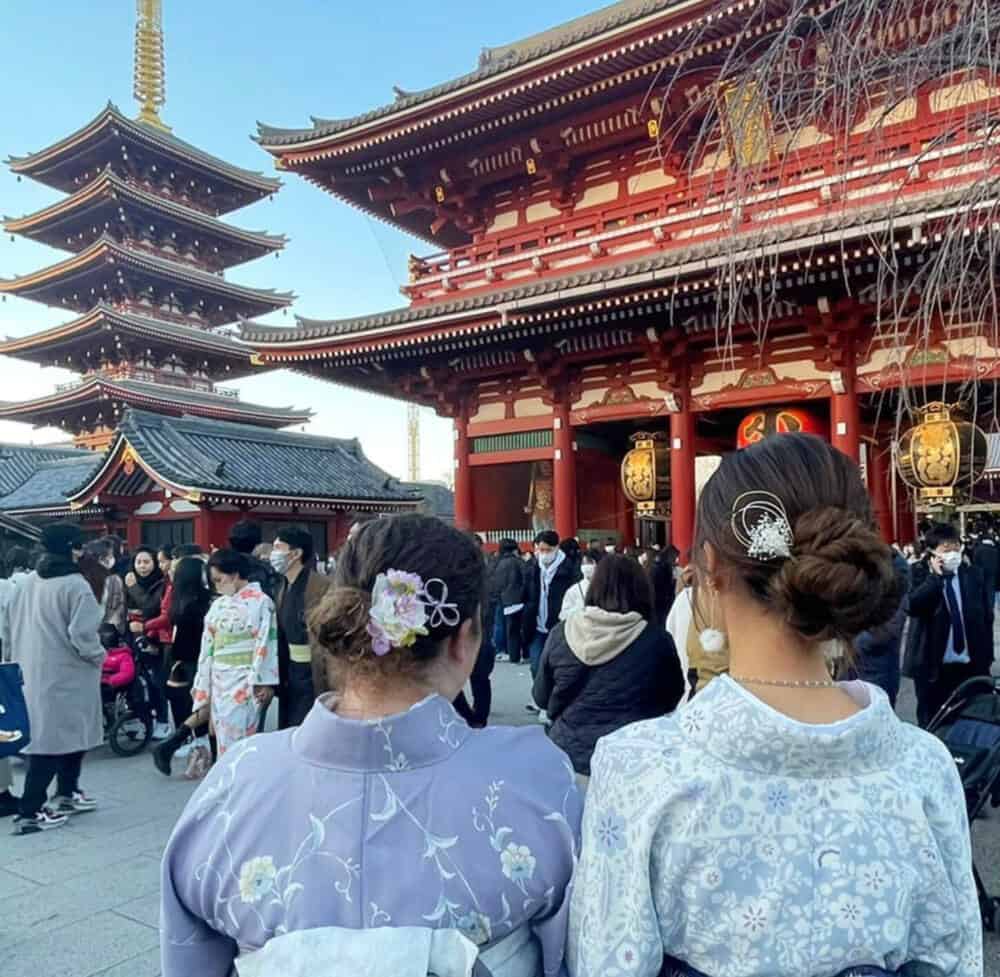
As a kid, I’d go with my family, dressed in our finest kimonos, and take part in this beautiful ritual. The air is filled with the smell of incense, and it’s a wonderful time to reflect and set your intentions for the year.
Shrines and temples are beautifully adorned, and you can also pick up your yearly omamori (amulet), which is said to provide protection and luck.
Plus, there’s a palpable sense of community as you see everyone coming together to welcome the New Year.
The tradition of Hatsumode is about not just seeking blessings for the future but also showing gratitude for the past year’s blessings and experiences.
Traditional New Year’s Foods
Now, let’s talk food. You know, New Year’s Eve in Japan isn’t complete without some traditional dishes. “Osechi ryori” is a must-have.
It’s a collection of colorful, compartmentalized boxes filled with different dishes, each with its own symbolism. From black beans (for good health) to fish cakes (for fertility), these dishes hold a lot of meaning.
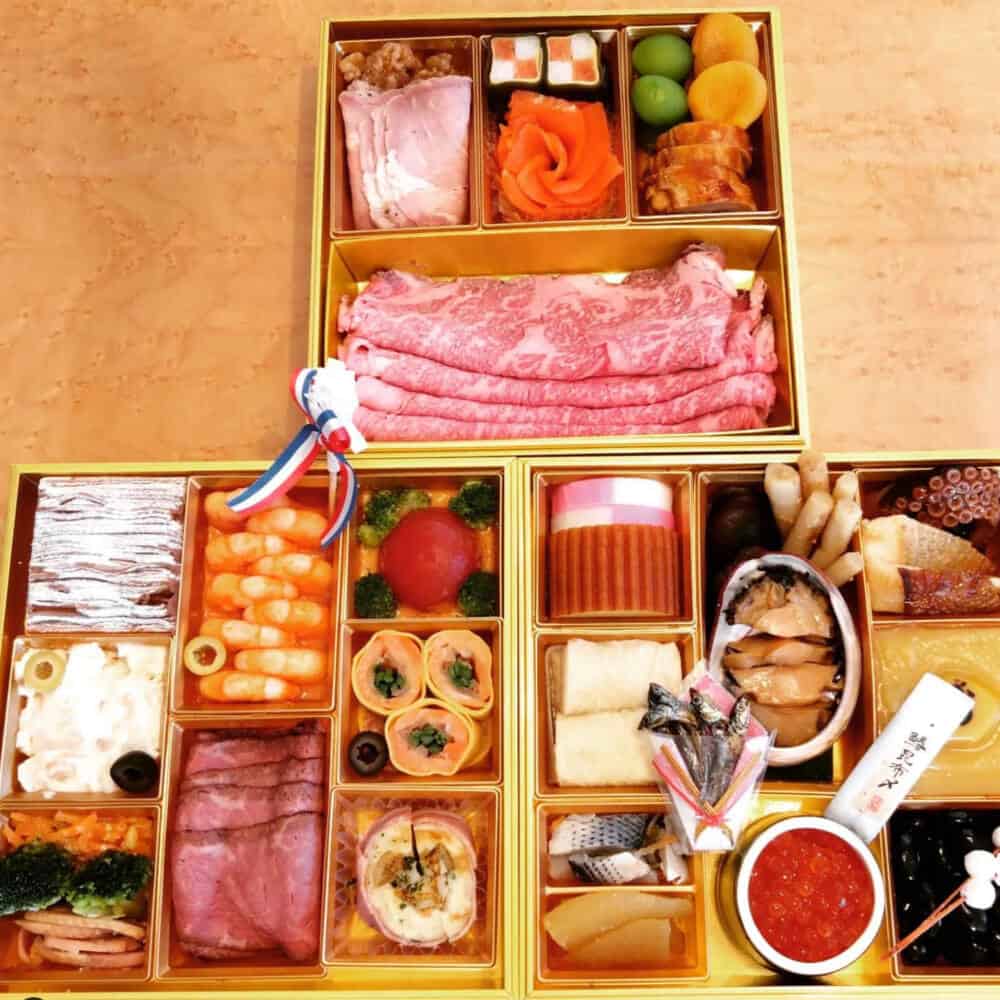
But my personal favorite has to be “ozoni,” a hearty soup with mochi (rice cakes). Each region in Japan has its own version, so it’s a delight to try the different variations.
And don’t forget “toshikoshi soba,” which symbolizes longevity. So, slurp up those noodles for a long and prosperous life!
These traditional New Year foods are not just about taste but also about cultural significance. Osechi ryori is often prepared days in advance, showcasing the meticulous nature of Japanese culinary art.
Families take great pride in arranging these dishes and passing down recipes through generations.
- Related: Hinamatsuri Girls Day Celebrations
Otoshidama: New Year’s Money for Children
If you’re a kid in Japan, New Year’s Day is basically your second birthday. You get “otoshidama,” which are little envelopes filled with money, from your parents and relatives.
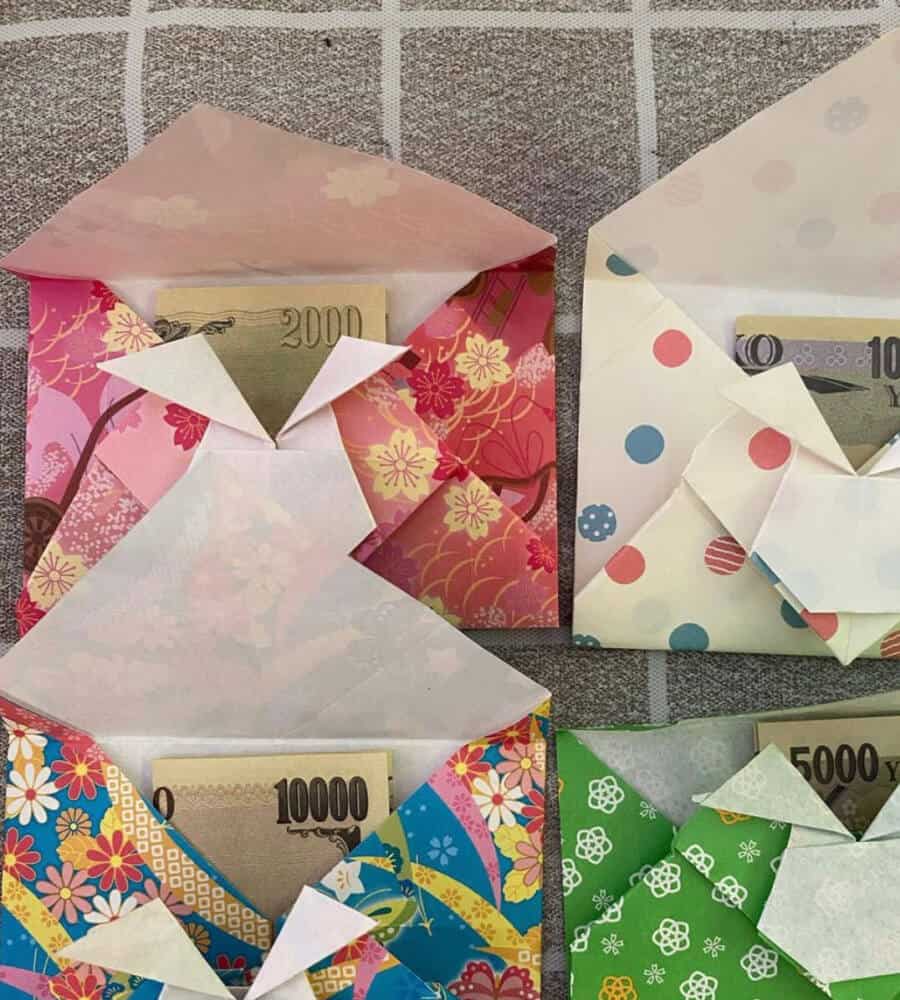
It’s not just about the money; it’s a lesson in saving and financial responsibility.
I remember diligently saving these envelopes, and over time, it taught me valuable money-management skills.
These envelopes are not just a gift but a gesture that encourages children to save for their future, imparting important financial values from a young age.
Kadomatsu and Shimekazari: New Year Decorations
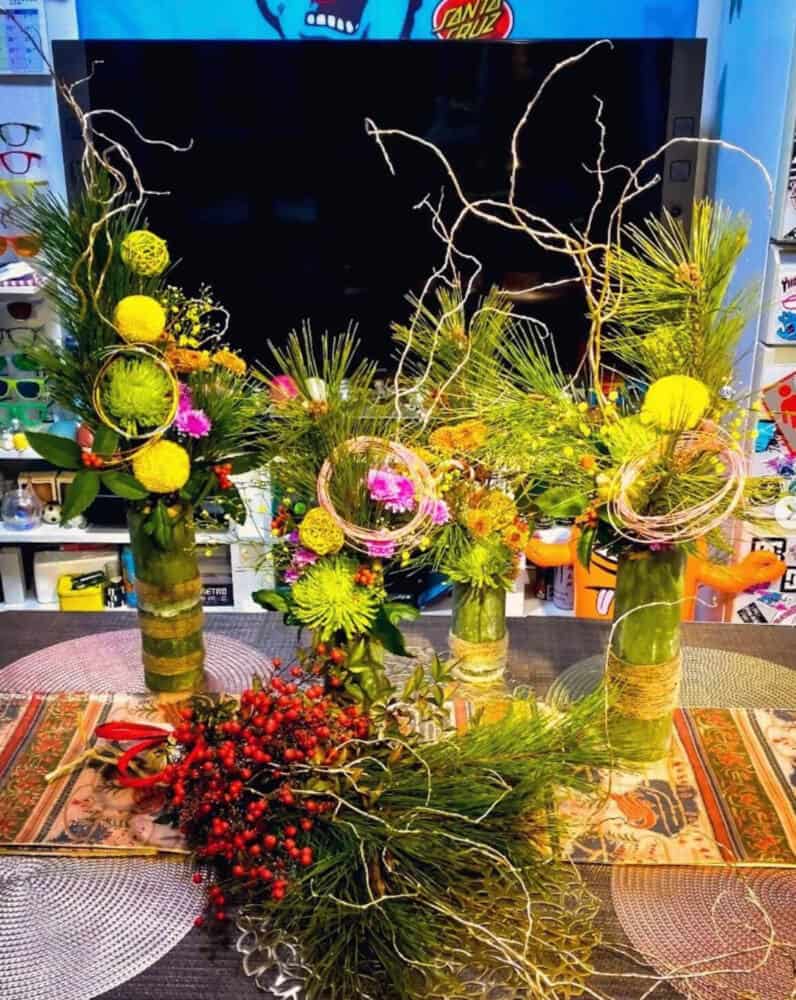
Decorations are a big part of Japanese New Year traditions. “Kadomatsu” is a combination of bamboo, pine branches, and plum branches, placed at the entrance of homes and businesses. The bamboo symbolizes growth, the pine represents longevity, and the plum is a sign of steadfastness.
And let’s not forget “shimekazari,” a sacred Shinto rope decorated with auspicious items. Together, these decorations bring a sense of purity, prosperity, and protection.
I can vividly remember helping my mom arrange these decorations. It was a fun family activity, and it made our home feel festive and welcoming. The act of decorating one’s home is a symbol of inviting prosperity and warding off evil spirits, a tradition that strengthens the bond within families.
Toshikoshi: Crossing Over to the New Year
New Year’s Eve in Japan is all about staying up late. We call it “toshikoshi,” which literally means “crossing over to the next year.”
There are so many ways people spend this night. Some watch special TV programs, others gather with friends for a midnight countdown, and some even play traditional games like “hanetsuki” (a Japanese version of badminton).
And then there’s the magical moment when the clock strikes midnight. The first sunrise of the year, known as “hatsu-hinode,” is highly significant.
It’s believed to have special powers and bring good fortune, so people often head to a nearby hill or beach to watch it. As a kid, I remember shivering in the cold, eagerly awaiting the first rays of sunlight.
Toshikoshi is a time to reflect on the past year and make resolutions for the new one. The act of staying up late signifies our determination to welcome the New Year with enthusiasm.
Whether you’re watching TV, playing games, or simply sharing stories with family and friends, this night is all about creating lasting memories.
Greeting the New Year: Traditional Phrases
In Japan, there’s a set of traditional phrases and greetings used during the New Year. These include “Akemashite Omedetou” (Happy New Year), “Kotoshi mo yoroshiku” (Please be kind to me this year), and “Nengajou” (New Year’s cards).
It’s a heartwarming tradition to exchange these greetings with friends and family, even if you can’t meet in person.
Sending New Year’s cards, or “nengajou,” is a big deal. The designs on these cards are often linked to the Chinese zodiac sign of the upcoming year, and there’s a sense of joy in both sending and receiving them.
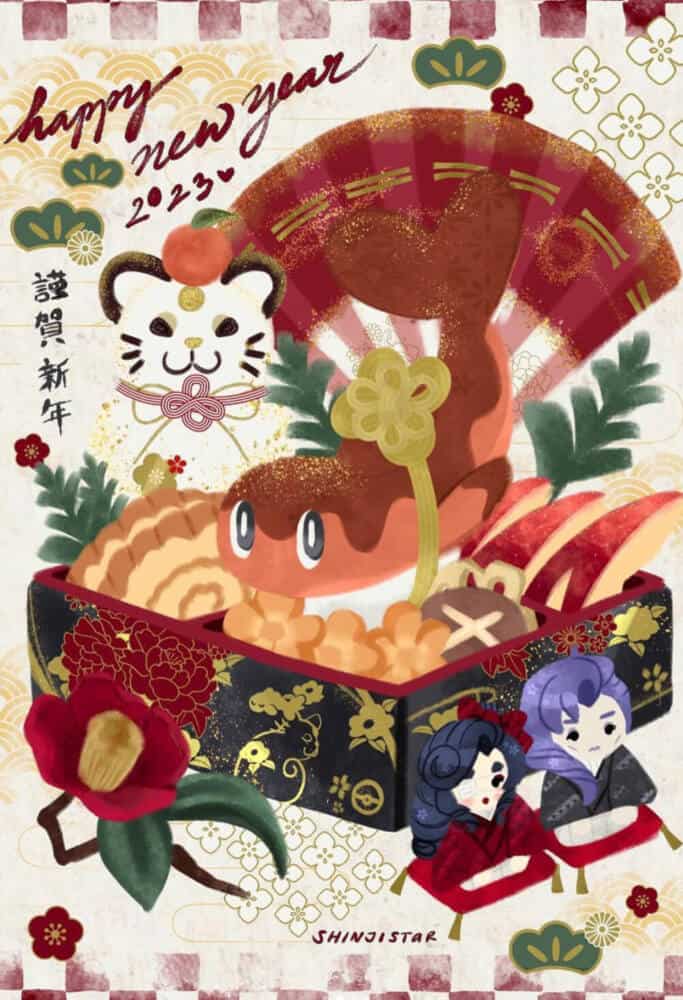
I remember sitting down with my family to write these cards and feeling the connection to our loved ones, even if they were far away.
It’s a reminder that even in this digital age, the written word and the effort put into sending greetings hold a special place in our hearts.
Conclusion
So there you have it, a glimpse into the wonderful world of Japanese New Year traditions. From the serene ringing of temple bells to the hearty bowls of ozoni, these customs have enriched my life in countless ways.
These traditions are more than rituals; they are threads that weave the fabric of Japanese culture, connecting generations and fostering a sense of community and belonging.
If you ever get the chance, experiencing a Japanese New Year in person is a must. The sense of tradition, community, and hope for the future is truly something special.
And if you can’t make it to Japan, you can always incorporate some of these customs into your own New Year celebrations.
After all, we can all use a little more symbolism, spirituality, and togetherness in our lives. Akemashite Omedetou Gozaimasu, everyone! (That’s “Happy New Year” in Japanese.)
What is the significance of Japanese New Year traditions?
Japanese New Year traditions hold deep cultural and spiritual significance. They symbolize renewal, family bonds, and a fresh start for the upcoming year.
When is Japanese New Year celebrated?
Japanese New Year, known as “Oshogatsu,” is celebrated from December 31st to January 3rd. The actual New Year’s Day is on January 1st.
Why are temple bells rung 108 times on New Year’s Eve?
The 108 rings of temple bells during “Joya no Kane” represent the purification of 108 worldly desires. It’s a spiritual practice to cleanse the mind and soul.
What are the traditional dishes associated with Japanese New Year?
Traditional New Year dishes include “osechi ryori,” “ozoni,” and “toshikoshi soba.” Each dish carries its own symbolic meaning, such as good health, longevity, and prosperity.
Why is “otoshidama” given to children on New Year’s Day?
“Otoshidama” is a gift of money given to children to encourage saving and teach financial responsibility. It’s a cherished tradition that instills valuable financial lessons from an early age.
What do “kadomatsu” and “shimekazari” symbolize in Japanese New Year decorations?
“Kadomatsu” symbolizes growth, longevity, and steadfastness, while “shimekazari” is meant to bring purity and ward off evil. These decorations are believed to invite prosperity and protect homes.
Why do people stay up late on New Year’s Eve during “toshikoshi”?
Staying up late during “toshikoshi” is a way to welcome the New Year with enthusiasm and to reflect on the past year. It signifies a determination to start the new year with energy.
What is the significance of sending New Year’s cards (“nengajou”) in Japan?
“Nengajou” is a tradition that allows people to exchange greetings and well wishes for the upcoming year. It’s a way to stay connected with loved ones and hold onto the written word in the digital age.
How can I incorporate Japanese New Year traditions into my own celebrations?
You can incorporate Japanese New Year traditions by trying traditional dishes, sending handwritten New Year’s cards, making resolutions during the “toshikoshi” period, and decorating your home with symbolic items.
Is Japanese New Year a time for gift-giving like in other cultures?
While there’s a focus on giving “otoshidama” to children, Japanese New Year is more about symbolic and traditional gestures than extensive gift-giving, unlike some Western holidays.





